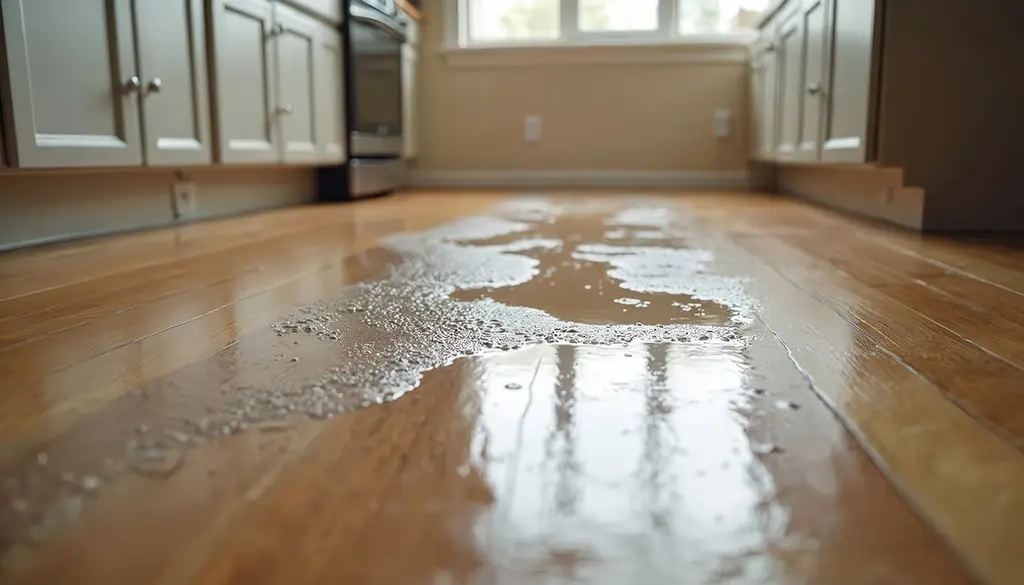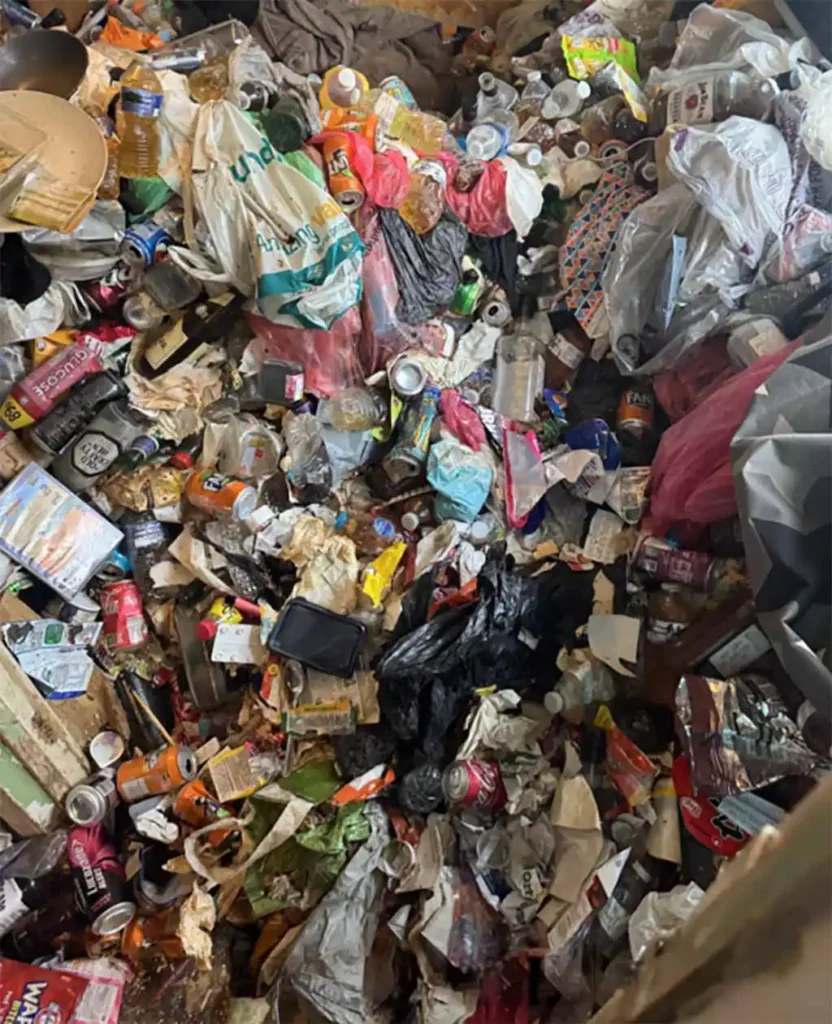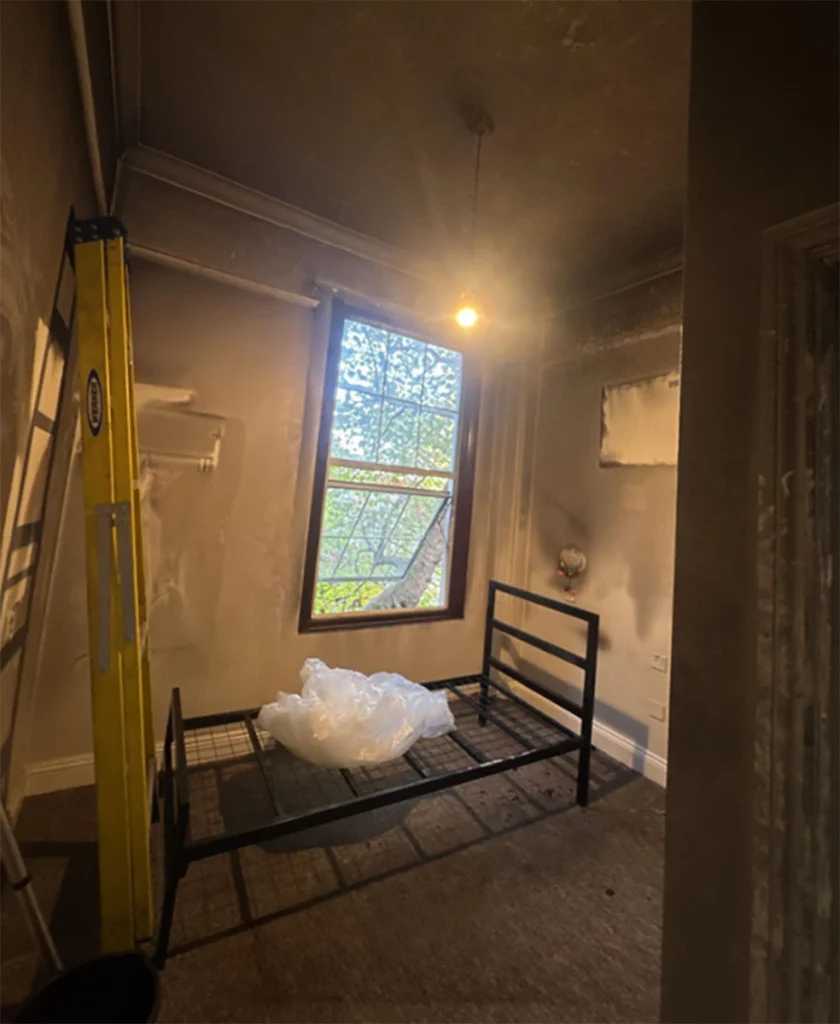The Problem: Leak in London residential property
Water damage can cause serious structural issues if not addressed promptly. A homeowner in East London contacted us after discovering an internal leak from the underfloor heating system in their third-floor flat, that would require professional water damage cleaning to resolve.
Key Concerns:
- Potential structural damage to walls, flooring, and insulation.
- Risk of secondary water damage to the flat below.
- Presence of mould growth, which can develop within 24-48 hours of a leak.
- High moisture levels in chipboard flooring, risking wood rot and decay.
The source of the leak, a faulty connection between the underfloor heating pipe and manifold, had already been repaired before our arrival. However, standing water and high moisture levels remained, posing risks of further deterioration, mould growth, and weakened building materials.
UK water damage statistics:
- 1 in 4 homes in the UK will suffer from water damage at some point. (Insurance Industry Reports)
- Mould can form within 24 – 48 hours of a leak if left untreated. (HSE UK)
- 80% of UK flood damage cases involve buildings with insufficient drying post-incident. (Flood Resilience Report, 2023)
The Solution: Extraction, disinfection & drying
Step 1: Moisture Assessment & Damage Evaluation
Using atmospheric readings, we assessed the extent of water damage, identifying moisture retention in:
- The party wall between the affected flat and its neighbour.
- The bathroom cavity wall, which showed visible mould growth.
- The chipboard flooring, where moisture content was twice the safe limit.
Step 2: Preventing Further Damage
To avoid structural weakening, we recommended pressure drying, a specialised drying method that eliminates trapped moisture without requiring major demolition.
Step 3: Specialist Water Damage Drying Process
We implemented an advanced drying regime using:
- Turbines & dehumidifiers to extract moisture from the air.
- Desiccant dehumidifiers to generate warm, dry air for deep drying.
- Condensing dehumidifiers to collect and safely remove moisture.
- Positive pressure drying systems, which force dry air into affected areas, speeding up the drying process.
- To ensure the bathroom floor could be saved, we used a dry-air injection system to remove moisture without lifting the flooring.
Step 4: Mould Remediation & Sanitation
- ULV fogging with an antimicrobial solution was performed before and after drying to prevent mould spread.
- Contaminated plasterboard and flooring were removed and replaced as needed.
The Result
The strip-out and enabling work took two technicians two days to complete, while the drying regime lasted two weeks to adequately dry the property. In addition, the mould growth was eliminated which prevented further spread and the structural integrity of the building was preserved which minimised any potential costly repairs.
If you’re dealing with a water leak, flood, or moisture issue, don’t wait! Contact us today for expert water damage restoration and specialist drying services.





















